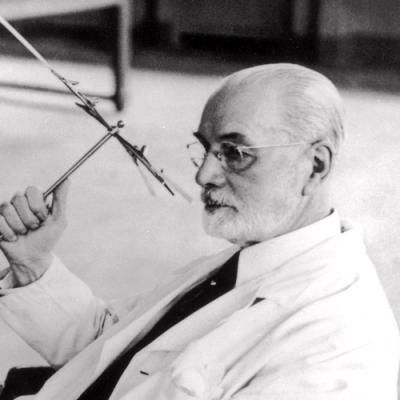- Jacques Guerlain Perfumer:
Web:guerlain.com
Jacques Edouard Guerlainwas a French perfumer born on October 7, 1874, and died on May 2, 1963. As the third and most renowned perfumer of the Guerlain dynasty, he is regarded as one of the 20th century’s most prolific and influential fragrance creators. While he is credited with composing over eighty perfumes, estimates suggest he may have crafted around four hundred scents throughout his career.

Early Life and Education
Born in Colombes, France, in 1874, Jacques was the second child of Gabriel and Clarisse Guerlain. He received part of his education in England before studying at Paris’ École Monge, where his curriculum included history, English, German, Greek, and Latin. His uncle, Aimé Guerlain—himself a childless perfumer—began training Jacques as his apprentice and heir at age sixteen. In 1890, Jacques created his first perfume,Ambre, then interned in the organic chemistry laboratory of Charles Friedel at the University of Paris before joining the family business officially in 1894.
Career and Innovations
Jacques pioneered experiments in cosmetics and fragrance, perfecting a method to perfume ink and publishing on essential oils with Justin Dupont. His early works includedLe Jardin de Mon Curé(1895), and in 1897, he became a joint owner of the family company alongside his brother Pierre and father. For two years, Jacques and Pierre alternated roles as manager and chief perfumer until Jacques settled into the latter position in 1899. During this period, he createdTsao Ko(1898), his first fragrance referencing the Orient—a recurring theme in his oeuvre.
Key Fragrances and Legacy
In 1905, Jacques married Andrée Bouffet; their first child, Jean-Jacques, was born the following year. He also completedAprès l’Ondée(translated as “After the Rains”), his first major commercial success. Described as “melancholy” byLa Liberté, the perfume marked Guerlain’s experimentation with heliotrope and violet notes, elevated by anisic aldehyde, eugenol, and abundant orris root—a composition praised by perfumer Ernest Beaux.
Pre-WWI and WWI Era:Le Parfum des Champs-Elysées, released on the eve of WWI, combined chocolatey floral notes to symbolize the impending turmoil Guerlain sensed.Post-War Masterpieces:Mitsouko(1919), inspired by Japan’s rise during the Russo-Japanese War, perfected oakmoss and gamma-undecalactone, becoming an iconic chypre.L’Heure Bleuepreceded it as a soft, ambery floral of the pre-war era.Magnum Opus:Shalimar(1925) paid homage to Mughal gardens, defining the oriental fragrance category and enduring as a bestseller for decades.Later Creations:Djédi,Liú,Vol de Nuit,Sous le Vent, andCoque d’Orshowcased his versatility, from severe, somber accords to aldehydic florals.
Enduring Impact
Jacques Guerlain’s iconic fragrances—includingShalimar Eau de Parfum,Champs Elysees Eau de Toilette,L’Heure Bleue,Mitsouko,Après l’Ondée, andVol de Nuit—incorporated oriental themes and exotic scents, influenced by his travels to Asia. His contributions to perfumery and the Guerlain legacy are immortalized in the Osmothèque, where Thierry Wasser donated original formulations on behalf of Guerlain in 2014. As a visionary who expressed history, culture, and emotion through scent, Guerlain remains one of the industry’s most transformative figures.
This version refines sentence structure, enhances transitions, and maintains chronological flow while preserving all key biographical details, fragrance highlights, and historical context.
